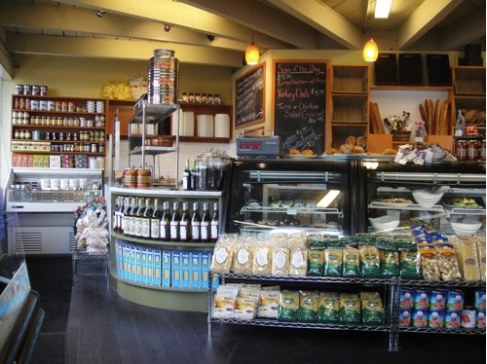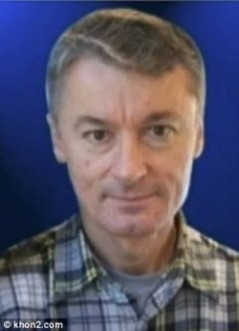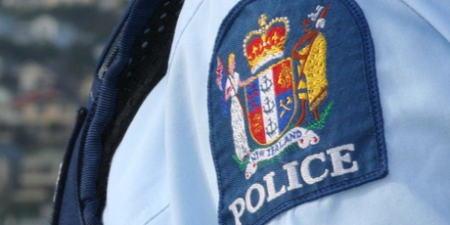It didn’t cross my mind that I’d end up here — the one thing I didn’t want to do was waste that money,’ he says sadly.
However, he denies Lara’s claim that their dramatic reversal of fortune is his fault.

The day they won: Roger, pictured with wife Lara, spent thousands on luxury holidays and private school fees after winning in 2005
‘Both of us wanted to try to turn our win into more,’ he says. ‘I thought I was doing the right thing. I was the one who won that money, so I took responsibility.’
Before their win, the couple owned a four-bedroom ex-council house in Boston Spa — and never failed to pay their mortgage.

Recording dreams: Roger revisited his dreams of becoming a rock star, spending £25,000 on making a record
How has it gone so horribly wrong?
‘When you’re told you’re a millionaire, it feels limitless,’ says Roger. ‘We had played the Lottery for years — when I found out I’d won, it was overwhelming.’
The night they won, they celebrated with a takeaway curry washed down by Camelot champagne. But it wasn’t long before the pound signs were spinning before their eyes. Within weeks, Roger had bought an £18,000 soft-top Audi, and Lara had booked them a trip to Dubai, flying business class and staying in a five-star hotel.
‘We must have spent £15,000 in ten days,’ says Roger.
However, contrary to Lara’s claim that Roger was the one chasing the millionaire lifestyle, he says she was only too happy to spend their new-found wealth.
‘She liked handbags, she liked shopping. She spent a lot of time at Louis Vuitton.’
Returning to the UK, Roger and Lara looked for a new home, appearing on a ‘Lottery winner’s special’ of Channel 4’s Location, Location, Location, before settling on the barn conversion in Wetherby. They spent £18,000 on refurbishments and £25,000 on furniture.
But the more they spent, the more extravagant their tastes became. Roger bought his Porsche and Lara swapped the Audi for her Lexus. They sent their two daughters — Ruby, now nine, and Kitty, six — to a private girls’ school, costing more than £20,000 a year.
The trip to Dubai was followed by others to New York, Florida and Rome — where they stayed in the Royal Suite of the St Regis, which comes with a personal butler.
A typical Saturday night had once involved ‘a few beers in front of the TV’ — now it was trips to London, staying at the £300-a-night One Aldwych.
Roger admits he became vain, having his teeth whitened, buying designer clothes ‘to look cooler’, and spending £300 a time on Botox, and more than £500 on tattoos — including the word ‘Lara’ on his bicep.

High life: Mr Griffiths posing with Take That’s Howard Donald, left, and Mark Owen, right, who he met while staying at The Sanderson Hotel in London
‘You feel different when you win the Lottery,’ he says. ‘It makes you want to do something with your life.’
So, with no bills to worry about and no office to go to, he revisited his youthful ambition to become a rock star. He reunited the band he had played in as a student at Lancaster University and hired a £1,000-a-month publicist in an attempt to hit the big time.
Though the band recorded only one single, it cost Roger £25,000 — largely because, with rehearsals taking place in London, he became a regular guest at the £240-a-night Sanderson Hotel, a celebrity hang-out where, he recalls, he drank cocktails with Take That’s Mark Owen and Howard Donald.
Unfortunately, the band’s single sold only 600 copies when it was released in September 2006.
Perhaps it isn’t hard to see why Lara feels her precious money has been wasted — but then, Roger claims she was only too pleased to have a ‘rock star’ husband.
‘She was proud. I remember when we got the first cut of the record and we listened to it. She didn’t mind at all.’
Either way, it wasn’t Roger’s only disastrous venture. Fuelled, he says, by his ambition to turn ‘£1.8 million into £5 million’, he restyled himself as a property developer — despite having no experience.
The house in Wetherby was followed by two more in Harrogate — one bought for £157,000, the other for £195,000 — which Roger planned to refurbish and sell for a profit.

No expense spared: Mr Griffiths driving one of the flashy sports cars he bought with his winnings
At Lara’s suggestion, they paid £100,000 for a beauty salon in Wetherby. But after a briefly profitable period, the salon started losing £4,000 a month — and the housing crash saw the couple’s ‘investment’ properties plummet in value.
Soon, they were digging into the £700,000 they had set aside in an off-shore account, but their spending barely slowed. ‘We’d still drink champagne — just not a bottle every night,’ says Roger.
They continued to take regular holidays, mainly to Majorca, though Roger insists they cut back their spending.
‘We may have gone on five-star holidays, but we emptied out the minibar and filled it up with our cheap products. We were as sensible as could be.’
Gradually, perhaps inevitably, the failure of their businesses took its toll on Roger and Lara’s 14-year marriage.‘We’d row about anything,’ he recalls.
But he is stung by the picture Lara has painted of him idling away time at home while she worked all hours at the salon.
‘It’s important for kids to have someone there,’ he says. ‘I was the first up, driving them to school and back. We’d come home and I’d start cooking the evening meal.’

Flashy holidays: Roger in New York during one of several globe-trotting holidays he enjoyed, including Dubai, Monaco and Rome
To make matters worse, a house fire, started by a faulty boiler just after Christmas, forced the family to pay for rented accommodation while £120,000 worth of repairs were carried out.
It was, says Roger, the final straw for his marriage. He became withdrawn, hiding in his study with his guitars and leaving Lara struggling to keep the salon afloat.
For this he has no excuse: ‘The pressure was enormous. It took six months for me to get used to being a millionaire, and then just as I got used to it, it crumbled around me.’
After finding an email which Roger had sent to a male friend asking for another woman’s phone number, Lara accused him of being unfaithful — a claim he strongly denies.
‘She went absolutely ballistic. It was the catalyst for me to think: “I really don’t want to be in this relationship any more.”’
He moved out of the family home in late 2011 and into the cottage where he lives today — one of his earlier ill-fated investments.
‘It crucifies me that I’m not with my daughters,’ Roger says. ‘But if I’d stayed, I would have gone mad.’
Since then, his finances have gone from bad to worse. He and Lara sold the salon at a loss of £70,000 in December, and their other, unoccupied, ‘investment’ property has been repossessed.

Happier times: The couple now live apart, with Roger in a cottage alone while Lara lives in the marital home
Their daughters have been withdrawn from their private school and sent to a state primary. The Wetherby barn conversion — where Lara still lives — is on the market (though Roger insists he still pays the mortgage when he can) and the Porsche was recently returned.
It’s hard not to feel some sympathy for Roger. There’s no doubt he has been very silly indeed — and caused a good deal of hurt to his family. But, as he sits alone in his poky bachelor pad, he appears a broken man.
‘Sometimes I scream out: “Where did this go wrong?” The dream is that winning the Lottery sets you up for life. In reality you win it, then you worry about losing it all.’
Remarkably, Roger insists he doesn’t regret picking those winning numbers. Neither does he regret the hotels, holidays, cars and champagne.
‘I was living the millionaire’s lifestyle — everyone who wins the Lottery should do that,’ he says. ‘There’s no point entering otherwise.’
Even, it seems, if you lose everything as a result.


























 A sink hole measuring two metres by two metres has opened up in Ipswich. Photos (clockwise, from top left) from Channel Ten, Channel Seven and Channel Nine.
A sink hole measuring two metres by two metres has opened up in Ipswich. Photos (clockwise, from top left) from Channel Ten, Channel Seven and Channel Nine.























